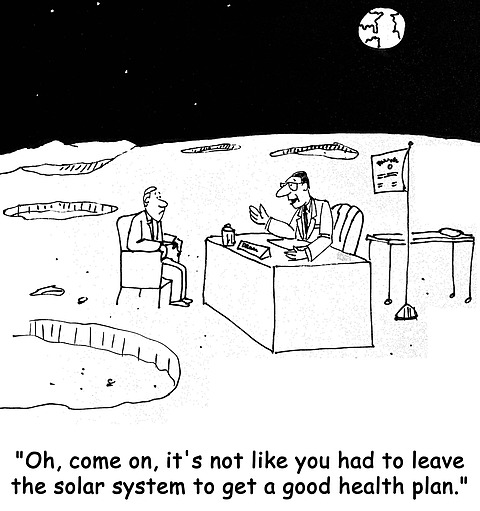The Three Moral Hazards of Health Insurance

The current pandemic intensifies the need for universal health insurance, but it raises, in some quarters, the specter of “moral hazard.” This term, with its troubling history, is taken to refer to incentives for patients to overuse healthcare services because these costs are borne by other policyholders. Put another way, policyholders as patients have an incentive to use more services than those on which their insurance premiums are based. For Massachusetts Institute of Technology professor Amy Finkelstein, the presiding expert on moral hazard, this is what “moral hazard” means.1 Besides policyholders, however, there are two other parties to health insurance: the insurers and health care providers. In a straightforward or perverse way, all three are subject to forms of moral hazard.
Like policyholders as patients, providers have the same incentives to overuse or over-provide services. But providers profit from this practice while patients simply get expenses covered. On the other hand, insurers have an inverse incentive to provide fewer services than those on which premiums are based and profit from the difference. This triangle of so-called moral hazards (which are not really about hazards of morality) has been overlooked by policymakers and leading economists whose work forms the basis for health insurance policy.
The history of the term “moral hazard” dates back to the nineteenth and early twentieth centuries, when people did not trust insurance companies.2 They offended clergymen and upright citizens as insurers were seen as gambling on the bad luck or ill fate of others.3 In response, insurance agents and advocates turned the tables by focusing on distrustful people and screening out those who posed a “moral hazard” to honest policyholders seeking to cover genuine risks. As a leading historian wrote, “[A]ddressing moral hazard signified the morality of the insurance enterprise at a time when that morality was in substantial doubt.”2 This newfound moral hazard pointed to ethnic minorities, immigrants, and others regarded as less than upright. Insurance agents (principally white, middle-class men) were trained to screen out such “distrustful risks” and take on the mantle of moral integrity. Moral hazard continues to discriminate against minorities to this day.

The modern meaning of “moral hazard” began when Kenneth Arrow, who went on to win the Nobel Prize in economics, started training after the Depression to become an insurance actuary.1 He conceived of insurers’ use of moral hazard as referring to information asymmetry—the fact that policyholders know more about their health conditions and risks than the insurance company.1,2 The health economist Mark Pauly affirmed this new meaning and concluded “that the problem of ‘moral hazard’ in insurance has, in fact, little to do with morality” but rather with lowering the cost to a policyholder of a claim.4 Over time, moral hazard has come to refer to people with medical insurance getting more medical care, aside from whether they need it or not.5,6
The theory of moral hazard implies that if policyholders’ costs drop to zero with single-payer, publicly-funded universal health insurance, demand and expenditures would become infinite. The theory questions the merit of any health insurance. In reality, countries like the UK that have universal health insurance free at the point of service spend far less on medical services than does the United States, and their services are rated higher by their own sick patients than U.S. patients rate their quality of care.7 But the idea that comprehensive health insurance helps to control appropriate use and prices is not part of moral hazard theory. While Finkelstein provides evidence that individuals with more health insurance use more medical services, she does not consider other good reasons why sick patients seek medical care, or why free health care can cost less. Instead, critics invoke moral hazard whenever policymakers campaign for universal health insurance.
Overlooked is how insurance policies work for the other side of policies, the insurers. Through claims adjustments and actuaries, companies can control how much of policyholders’ premiums they keep—an inverse insurer moral hazard faced by sick policyholders trying to get coverage for their medical expenses. Some well-established techniques of insurer moral hazard include setting coverage limits, deductibles, and co-payments; denying legitimate claims; profiting from delayed claims processing; and making it difficult to get valid claims paid through claims harassment. Other techniques include contingent or conditional coverage that disqualifies services a claimant believes are valid, and “gotcha” clauses such as requiring prior notification for elective procedures as specified in the fine print that few policyholders read. Unlike individual moral hazard, which makes no money for the patient but only pays for services rendered for treating a medical problem, companies stand to profit millions from exploiting the perverse incentives of insurer moral hazard. Historically, short-changing policyholders is where moral hazard began in the early days of widespread distrust of insurers.
The third kind of moral hazard consists of physicians, clinics, labs, and hospitals profiting from provider moral hazard by carrying out more services than insured patients really need. It is providers, not patients, who generate most of the medical bills sent to insurers. Provider moral hazard lies behind efforts to induce insured patients to want or “need” more tests and procedures. High-margin testing and elective surgery especially benefit providers. While both patients and insurers depend on providers as the experts to determine which services and claims are valid and legitimate, there seems no limit to the upward spiral of provider moral hazard.
In sum, of the three moral hazards in health insurance, the consequences of incentives faced by patients seem least substantial and are offset by the uncompensated pain, suffering, anxiety, and trouble of seeking care. More substantial are the incentives and profits built into insurer and provider forms of moral hazard. If we want to rein in spiraling medical costs, the proven best way is to have integrated universal health care insurance and service protocols, as found in countries like The Netherlands or Germany. Some moral hazard would remain, but much less.
1. A. Finkelstein, K. J. Arrow, J. Gruber, J. E. Stiglitz, Moral Hazard in Health Insurance. (Columbia University Press, New York, 2015).
2. T. Baker, “On the Genealogy of Moral Hazard,” Texas Law Review 75, 237–292 (1996).
3. V. Zelizer, Morals and Markets: The Development of Life Insurance in the United States. (Columbia University Press, New York, 1979).
4. M. V. Pauly, “The Economics of Moral Hazard: Comment,” American Economic Review 58, 531–537 (1968).
5. D. Stone, “Moral Hazard,” Journal of Health Politics, Policy and Law 36, 886-896 (2011).
6. J. A. Nyman, “Is ‘Moral Hazard’ Inefficient? The Policy Implications of a New Theory,” Health Affairs 23, 194–199 (2004).
7. E. C. Schneider, D. O. Sarnak, D. Squires, A. Shah, M. M. Doty, “Mirror, Mirror 2017: International Comparison Reflects Flaws and Opportunities for Better U.S. Health Care,” (Commonwealth Fund, New York, 2017).